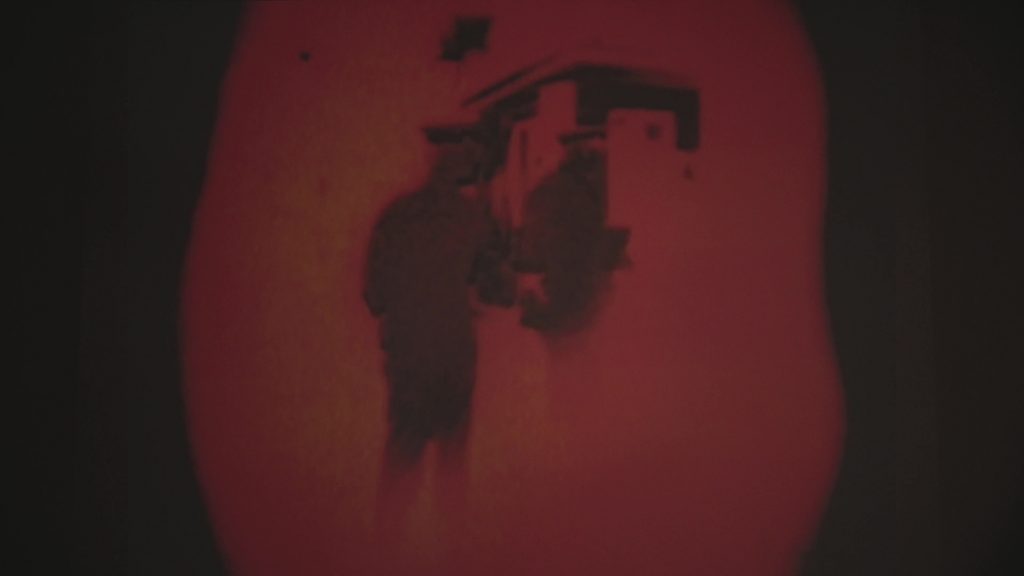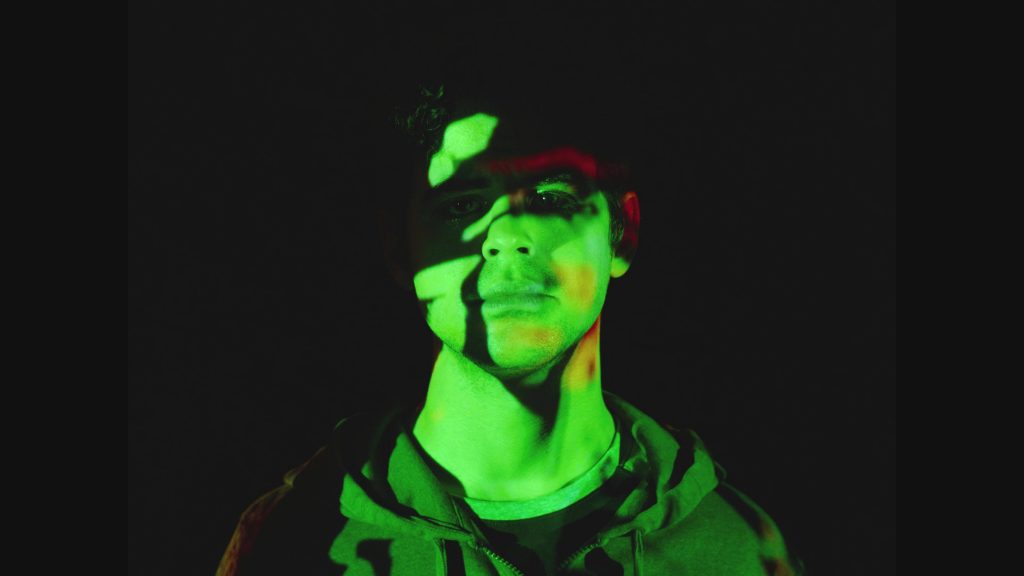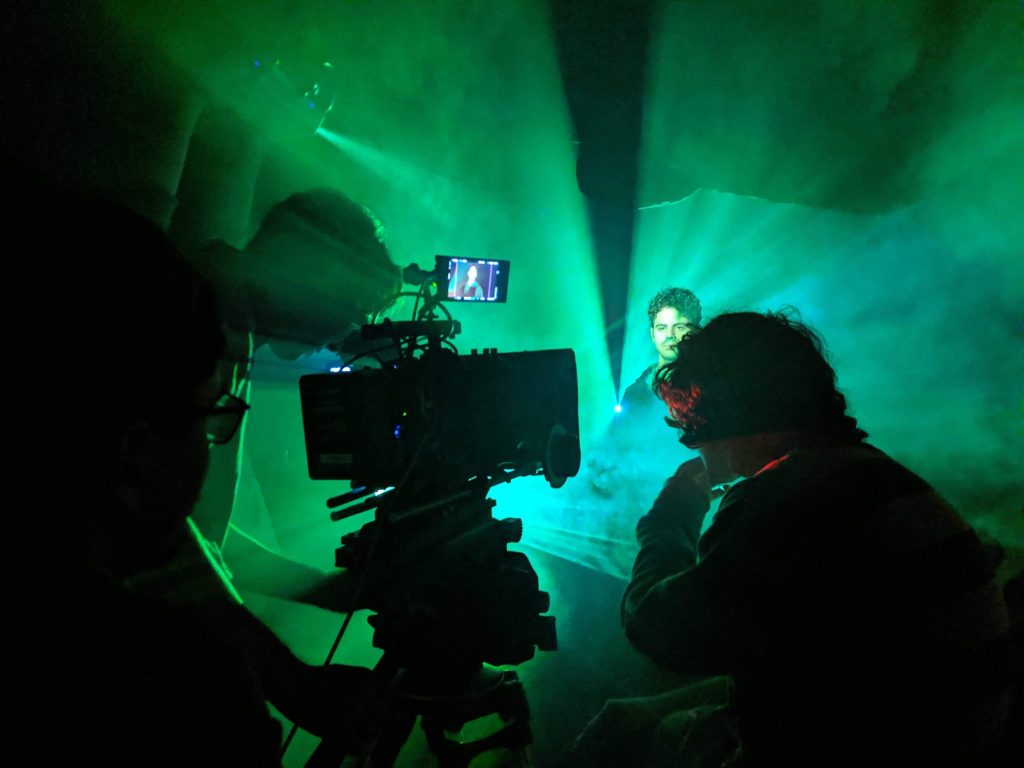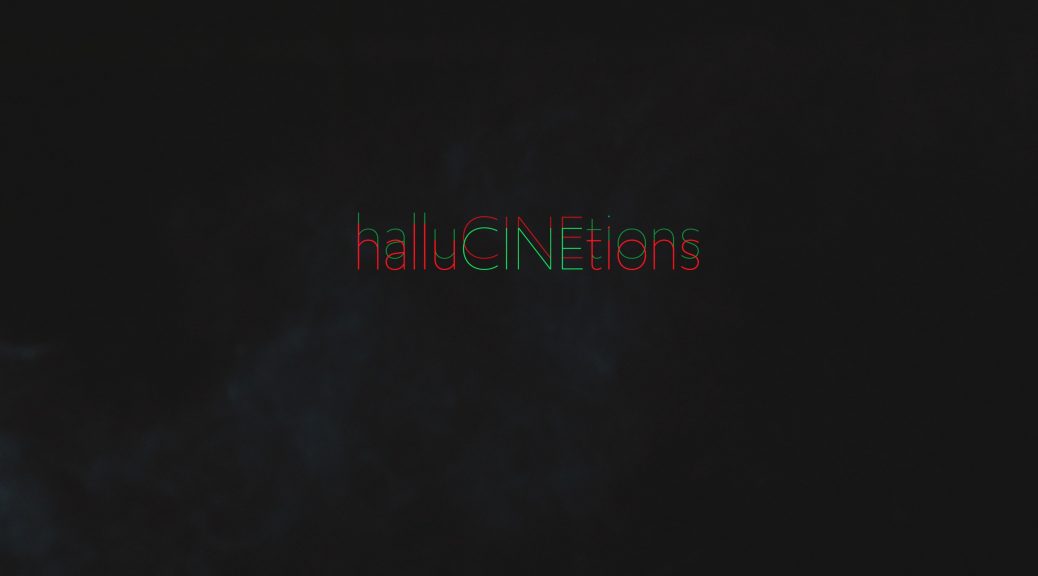Logline:
A man falls asleep in a movie theater. When he wakes up, he is all alone and the film on the screen has been replaced by strange images and sounds which he can’t recognize.
Description:
halluCINEtions is a 9-minute-long short experimental film that takes place almost entirely inside a movie theater. It follows a young man who falls asleep during a screening of an old film and wakes up to images (and sounds) which he can’t recognize. Those images are from Threshold, an experimental film by Malcolm Le Grice, and, foregoing any glib
“homage,” tries to engage in a conversation with Threshold. Ultimately, halluCINEtions is a film about cinema itself that takes from Buster Keaton and silent cinema, passes through classical Hollywood, and, as the character literally enters the screen at the end, moves to the world of experimental film: the realm of pure sensation.

Statement:
I had the good fortune of attending a retrospective of the British experimental artist, Malcolm Le Grice, back in 2019, where I not only saw his films on the big screen but also listened to Le Grice himself talk about them. Although Threshold wasn’t part of the program that night, it was one of his works that I watched on my own, and it was so profoundly inspiring to me that it became the text around which I formed a film of my own. More than just a tribute or an adaptation, halluCINEtions was conceived as a piece in conversation with Threshold. An attempt to recreate, visualize, and materialize the emotions I experienced in my first encounter with that film. I recall Le Grice talking about a realization that he had as a young filmmaker: that there has never been a truly modernist
period in film history, in the same sense that there has been in painting and other mediums. I have come to a somewhat similar conclusion about cinema not having, what for lack of a better word, we might call a genuine “post-modernist” period, in which artists freely and truly engage with other works, not as in simply mimicking their aesthetics, paying tribute to them, etc. But in a much more immediate sense, of direct, unmediated, and uncompromised engagement, the likes of which one might perhaps only find in the works of Jean-Marie Straub and Daniele Huillet, whose fierce direct engagement with works of literature, history, and politics has certainly been an influence on myself and this project. The aim of halluCINEtions was to create such an engagement, on both a sensory and intellectual level, not with words (in fact the film is entirely devoid of them), but rather with images and sounds: with cinema itself.

As with the aforementioned film, increasingly other texts are no longer merely sources of inspiration, rather they appear directly in my work. Their appearance is not just an act of homage, they are part of the very fabric of my works. When I talk about cinema as cinephilia, I talk about the ‘intertext’ becoming the text itself, I talk about cine-thinking: approaching cinema with cinema, directly, not with resort to analytical voiceover à la essay films. If for the essay film, films are texts to be analyzed, for the cine-film, they are living beings to talk to, to touch, to experience. In another film of mine, The Act of Seeing, the character-viewer only watches the screen. Deeply affected by the images (Stan Brakhage’s Black Ice) as he may be, he ultimately merely sheds a tear in awe. In the follow-up to that film, Lucida, the character-viewer has to find the screen, barricaded by the facades and mundanity of a dull daily existence. The logical conclusion to this trilogy comes in halluCINEtions, where the viewer is in the ultimate viewing space, the cinema itself. The
film concludes with the viewer entering the screen, and becoming part of it. As I once wrote in an essay on cinephilia: “My journey through cinema has been one from the back to the front of the theater.” I might have ended the piece writing: “and it will conclude with me crossing over the threshold of the screen.”

